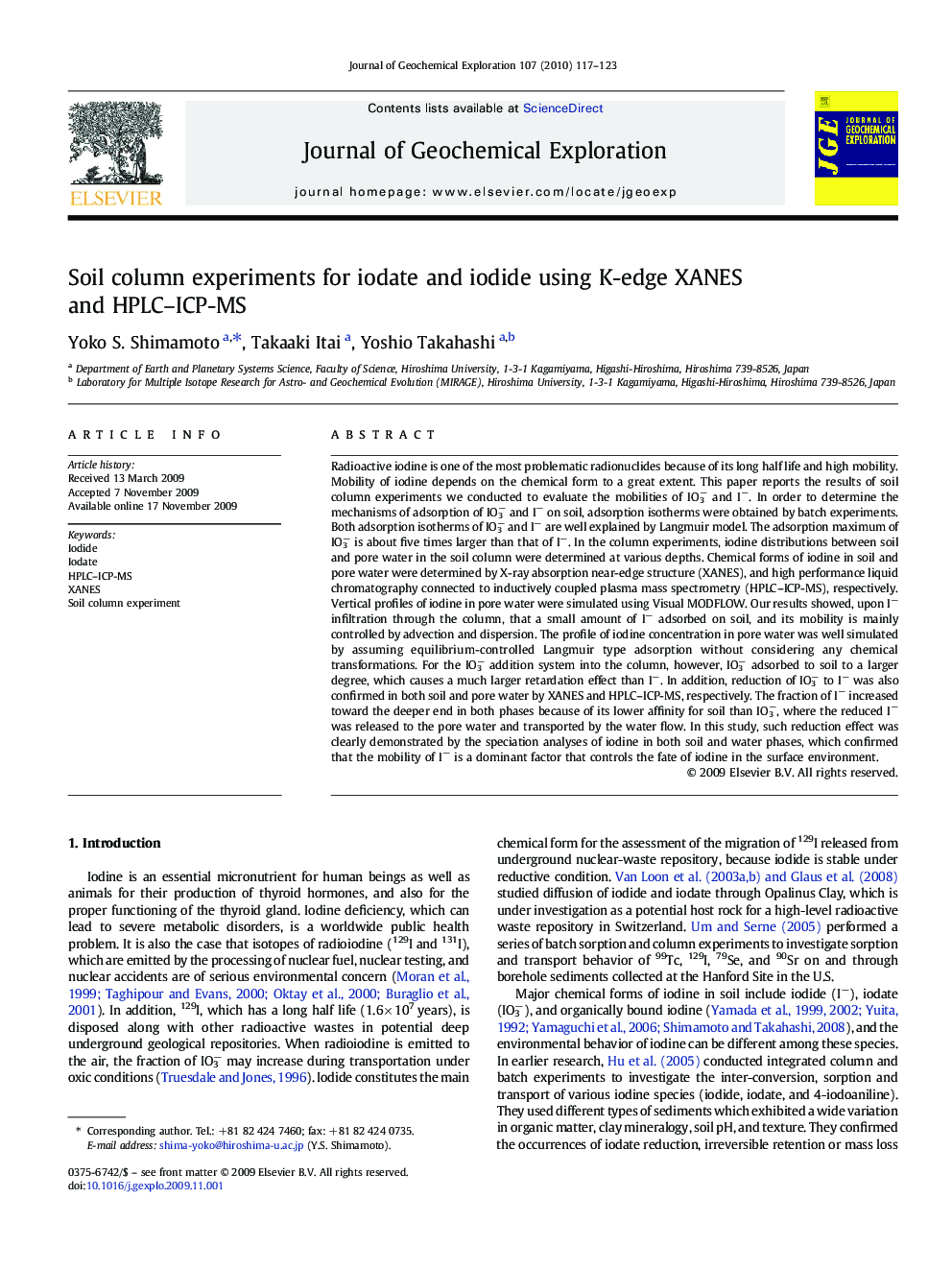| Article ID | Journal | Published Year | Pages | File Type |
|---|---|---|---|---|
| 4457958 | Journal of Geochemical Exploration | 2010 | 7 Pages |
Radioactive iodine is one of the most problematic radionuclides because of its long half life and high mobility. Mobility of iodine depends on the chemical form to a great extent. This paper reports the results of soil column experiments we conducted to evaluate the mobilities of IO3− and I−. In order to determine the mechanisms of adsorption of IO3− and I− on soil, adsorption isotherms were obtained by batch experiments. Both adsorption isotherms of IO3− and I− are well explained by Langmuir model. The adsorption maximum of IO3− is about five times larger than that of I−. In the column experiments, iodine distributions between soil and pore water in the soil column were determined at various depths. Chemical forms of iodine in soil and pore water were determined by X-ray absorption near-edge structure (XANES), and high performance liquid chromatography connected to inductively coupled plasma mass spectrometry (HPLC–ICP-MS), respectively. Vertical profiles of iodine in pore water were simulated using Visual MODFLOW. Our results showed, upon I− infiltration through the column, that a small amount of I− adsorbed on soil, and its mobility is mainly controlled by advection and dispersion. The profile of iodine concentration in pore water was well simulated by assuming equilibrium-controlled Langmuir type adsorption without considering any chemical transformations. For the IO3− addition system into the column, however, IO3− adsorbed to soil to a larger degree, which causes a much larger retardation effect than I−. In addition, reduction of IO3− to I− was also confirmed in both soil and pore water by XANES and HPLC–ICP-MS, respectively. The fraction of I− increased toward the deeper end in both phases because of its lower affinity for soil than IO3−, where the reduced I− was released to the pore water and transported by the water flow. In this study, such reduction effect was clearly demonstrated by the speciation analyses of iodine in both soil and water phases, which confirmed that the mobility of I− is a dominant factor that controls the fate of iodine in the surface environment.
